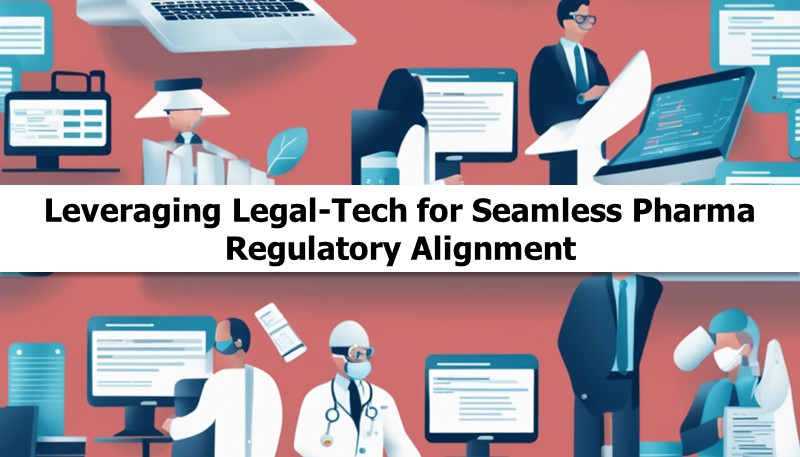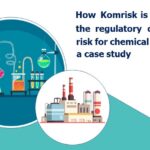Did you know that the Indian Pharma Industry is estimated to have CAGR of 13% in the global pharma market? It is the largest exporter of generic medicine with 20% of global supply by volume. It is the 3rd largest API manufacturer holding 8% of global API business.
Wonderful! Right?
But what about complying with the Law? Here are couple of quick links to shed some light on the current compliance concerns:
- https://www.businesstoday.in/industry/pharma/story/deloitte-survey-compliance-an-issue-with-indian-drug-firms-48719-2015-06-03
- https://www.cnbctv18.com/healthcare/us-fda-sees-alarming-rate-of-non-compliance-in-indian-facilities-17024421.htm
Both news articles express concern and global apprehensions about compliance issues in the Indian Pharma Industry. The story of Business Today is as late as June 2015, and from CNBC is from June 2023. Eight years have passed, and nothing has changed!
The other concerning issue of compliance management in the pharma sector in India is the rising cost. Ironically, the cost of non-compliance is even greater, especially as the cost is shared by both the perpetrator and the public at large.
With the above concerns, let us explore how we can improve the compliance management system of the Indian Pharma Industry. In the ever-evolving landscape of the pharmaceutical sector, ensuring regulatory compliance is not just a matter of business ethics; it’s a critical aspect that directly impacts public health and safety. The complex web of regulations and guidelines imposed by regulatory authorities necessitates innovative solutions to bridge the compliance gap and keep pharmaceutical companies aligned with evolving expectations. This is where the synergy between organizational compliance functions and legal tech comes into play in order to revolutionize how the pharma sector meets regulatory challenges head-on.
The Regulatory Landscape: A Challenge to Embrace
Pharmaceutical companies operate in an environment where stringent regulations govern every aspect of their operations, from drug development and clinical trials to manufacturing, distribution, and post-market surveillance. On average, over 2000 compliances are applicable to a pharma company in India across various laws, regulators, and mandates. The number increases multi-fold if you are a listed company having operations spread across multiple geographies or are involved in exports, R&D, and other specialized operations. And you must be ESG-aligned!
Keeping up with ever-changing requirements can be overwhelming, often leading to compliance gaps, errors, and delays that can have far-reaching consequences. This is where compliance management solutions and legal-tech tools step in, offering a comprehensive approach to navigating this intricate regulatory maze. Let us look at some of the benefits of using legal tech solutions:
Real-time Regulatory Updates and Insights
One of the core challenges in the pharmaceutical industry is staying up to date with the latest regulatory changes. With over 2000 compliances to track and other in-house responsibilities, the in-house legal team often finds it difficult to track regulatory updates, perform applicability analysis across various plants or units, and ensure compliance. This is where professional help is a must. Compliance management solutions backed by experience and expertise of the solution provider helps create a dynamic system in tracking all the regulatory changes effectively. Automated monitoring systems scour the regulatory landscape, delivering real-time updates and insights about new requirements or amendments. This proactive approach ensures that pharmaceutical companies can promptly adjust their strategies and processes, avoiding costly oversights.
Streamlined Data Management and Documentation
Maintaining accurate and organized documentation is fundamental to regulatory compliance in an organization. Legal-tech infused compliance management software offers centralized platforms for managing the vast amount of compliance data and their audit trail. Cloud-based storage facilitates secure data sharing and collaboration across teams, reducing the risk of data discrepancies and errors. Further, the tech capabilities ensure adequate analytics at the touch of a button in real-time.
Seamless Workflow Automation
Navigating regulatory processes involves numerous tasks, from submissions and approvals to reporting and audits. The most important of all is the onus! Compliance management tools can create workflow automation to streamline these tasks. What would work better is the three-way handshake between your compliance checklist, your organogram, and your regulatory calendar. Automated workflows reduce miss-outs, manual errors, expedite approval timelines, and most importantly enhance the overall process efficiency.
Proactive Risk Assessment and Mitigation
One of the most critical legal risks is compliance risk and mitigating compliance risks before they escalate is paramount. Compliance management solutions employ legal-tech tools to assess potential risks and provide actionable insights for mitigation. By identifying vulnerabilities and recommending preventive measures, these solutions empower companies to safeguard compliance and public safety.
Enhanced Auditing, Reporting, and Transparency
For a sector like Pharma, compliance inspections and audits are inevitable. Legal tech solutions can simplify this process by automating audit procedures, tracking findings, and generating comprehensive reports. With the right solution in place, you can generate audit checklists based on your business and unit-specific details in a matter of minutes and keep all your audit documents in a single platform. This transparency not only saves time but also fosters accountability during regulatory interactions.
Empowering Workforce Training and Collaboration
One of the most critical elements of legal risk management is to imbibe the compliance culture within employees of an organization. Legal-tech solutions infuse the “processes and procedures” in day-to-day activities fostering a culture of compliance. They also offer e-learning platforms that educate employees about evolving regulations and best practices. These platforms foster collaboration by ensuring that all teams are informed and aligned. It is to be considered that most of the compliance stakeholders are often not trained lawyers or compliance professionals. They either lean heavily on the in-house legal teams or ignore the compliance responsibility. Compliance management solutions offer them the details of what is to be done in a simple language making the process effective and reducing the dependencies on the legal teams.
Revolutionizing Adverse Event Tracking and Reporting
Pharmacovigilance demands meticulous adverse event tracking and reporting. Compliance management tools infused with legal tech facilitate seamless data collection, tracking, and reporting, ensuring companies adhere to regulatory requirements and swiftly address safety concerns. Auto reporting helps relevant stakeholders stay alert and informed.
Conclusion: Forging Ahead with Compliance Confidence
In the pharmaceutical sector, compliance isn’t just a box to check, it’s a commitment to public health and safety. Moreover, it’s a reflection of organisational culture and values. Continued non-compliance has capped the potential of Indian Pharma companies so far and can dangerously affect their growth in the future. Ultimately affecting their revenues, market share, and organisational sustainability.
The partnership between legal tech and pharma companies in India can reshape how pharmaceutical companies navigate the intricate regulatory landscape. By delivering real-time insights, automating processes, enhancing collaboration, and promoting proactive risk management, these solutions empower companies to meet regulatory expectations and stay at the forefront of a rapidly evolving industry. As the regulatory landscape continues to evolve, embracing these innovations is paramount to ensuring a safer, more compliant pharmaceutical future.
Written by: Chaitanya Kulkarni
Co-authored by: Kanishka Bose, Saikat Mondal
Disclaimer
All material included in this blog is for informational purposes only and does not purport to be or constitute legal or other advice. This blog should not be used as a substitute for specific legal advice. Professional legal advice should be obtained before taking or refraining from an action as a result of the contents of this blog. We exclude any liability (including without limitation that for negligence or for any damages of any kind) for the content of this blog. The views and opinions expressed in this blog are those of the author/(s) alone and do not necessarily reflect the official position of Lexplosion Solutions. We make no representations, warranties or undertakings about any of the information, content or materials provided in this blog (including, without limitation, any as to quality, accuracy, completeness or reliability). All the contents of this blog, including the design, text, graphics, their selection and arrangement are the intellectual property of Lexplosion Solutions Private Limited and/or its licensors.
ALL RIGHTS RESERVED, and all moral rights are asserted and reserved.





